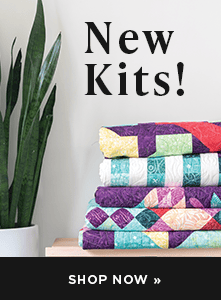Featured Tool: Bloc Loc Half Square Triangle Ruler by Bloc Loc
What is this typically used for?
Squaring up half-square triangles (HST) to the correct size.
What was your first impression of the Bloc Loc Half Square Triangle Ruler?
I was intrigued by the idea of a specialized ruler for HSTs.
How did you use it?
I started by using it to square up half-square triangles in a mini quilt. I was impressed how well it helped me keep the diagonal seam exactly in the corner which is important for precise piecing and points.
How long did it take you to learn how to use it?
Not long at all. It was easy to learn and get in a rhythm of cutting.
What did you like best?
The way it helped keep the diagonal seam exactly in the corner. The markings are clear and easy to read. I make my HSTs 1/8″ larger than the math requires; it helps square-up precisely to the unfinished size for piecing. You can make various size HSTs with one ruler (in 1/2″ increments).
What did you like the least?
I bought the 6-1/2″ Bloc Loc first, knowing I could trim many sizes of HSTS 6-1/2″ square and smaller. I wish I had bought the set of 3 because I prefer to use the size closest to the size of HST – I have them all now!
Why do you NEED it?
Precisely trimmed HSTs enable a quilter to maintain sharp points and straight diagonal lines between blocks – Bloc Loc does a great job helping me accomplish that. HSTs are in so many quilt designs.
Could you see another potential use for the tool?
Mainly for squaring-up HSTs but I do that a lot! It is now my favorite way of trimming HSTs.
Who would appreciate the Bloc Loc Half Square Triangle Ruler most?
These are perfect for:
- Beginner, intermediate, and expert quilters
- Any quilter who is intimidated by half-square triangles



 Tutorials
Tutorials










